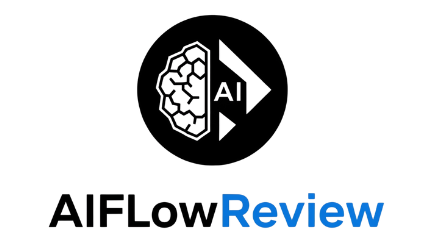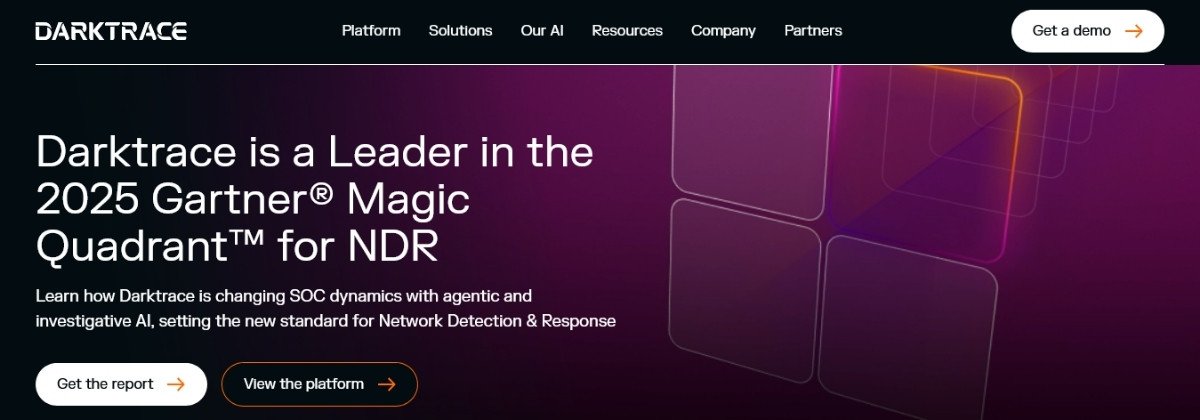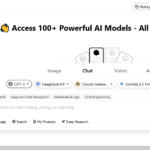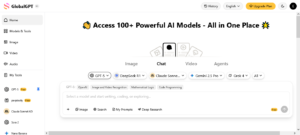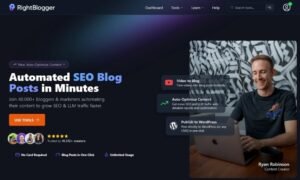Cyber threats aren’t slowing down, and neither are the folks working on smarter ways to spot and block them. It’s not just security teams feeling the pressure—everyone with an online presence knows how fast things can go sideways. That’s where AI-powered security tools like Darktrace come in. Their popularity has taken off as businesses, creators, and tech pros look for faster, more flexible cyber defense.
In this review, I’m covering what Darktrace actually does, what sets it apart, and how it’s handling real-life attacks. I’ll highlight its most talked-about features, share honest pros and cons from my own use, and give Darktrace a fair score out of 10. If you’re weighing the risks of old-school security tools or hunting for something that learns and adapts, this guide breaks it all down so you can decide for yourself. I’m keeping it straightforward, tested, and useful for everyone—beginners, tech pros, and AI skeptics alike.
What is Darktrace?
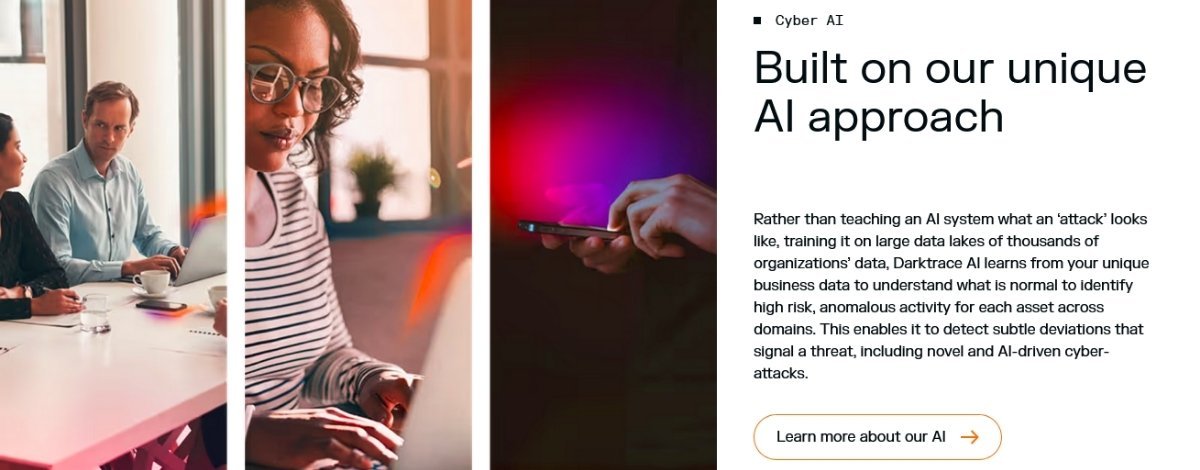
If you’ve followed the surge in interest around AI security, Darktrace is a name that stands out. At its core, Darktrace is an AI-powered cybersecurity platform designed to detect, investigate, and respond to attacks in real time. The company’s whole pitch is that security teams can’t keep up with attack volume and sophistication using human power alone.
Darktrace uses machine learning to watch what happens on your network and figure out, on its own, what’s normal. When something steps out of line, it acts as a digital security dog—barking at the unusual, blocking threats, and often acting faster than a human responder could. This approach has made it a favorite among many of the world’s top security and network teams.
Self-Learning AI at the Core
Darktrace ditches the old-school “signature-based” methods. Instead, it builds a baseline of your business’s unique patterns—everything from how users log in to when devices talk to each other. This is pure self-learning AI, meaning the system adapts as the environment changes or grows, without the need for heavy manual configuration.
Think of it like training a guard dog not with textbooks of every possible intruder, but by letting it live on your property until it notices what’s out of place—be it a delivery driver at the wrong hour or a new device popping up on the WiFi. More background is available in this Cyber AI overview from Darktrace.
Real-Time, Autonomous Threat Detection
Speed is everything during a security incident. Darktrace watches your network traffic and user activities, looking for anything odd: strange logins, unapproved software, weird data flows, you name it. When something pops out, you’ll see alerts with context, and in many setups, the AI can also contain threats autonomously.
Autonomous response means Darktrace can freeze accounts, block file transfers, or even quarantine devices based on the threat assessment—without waiting for a human analyst. This is key when you’re up against ransomware or fast-paced, automated attacks.
Use-Cases That Matter
People use Darktrace for more than just network monitoring. Its platform covers:
- Identity and access risks (stopping credential theft before it spirals)
- Device and endpoint protection, acting alongside traditional EDR tools
- Cloud, SaaS, and email security
- Securing operational technology (OT) environments where downtime means dollars lost
If you’re looking for the big-picture comparison—how Darktrace fits versus others—check the best AI security tools of 2025. There’s no one-size-fits-all in this space, and fit often depends on both budget and existing stack.
Pros, Cons, and Honest Score
Here’s my clear-eyed take on strengths and drawbacks:
Pros:
- Learns from your actual environment, not just generic external data
- Handles unknown and fast-evolving threats without constant rule-writing
- Cuts alert fatigue by surfacing only high-priority incidents
Cons:
- The “black box” feel; AI-driven alerts sometimes need more explanation
- Pricey for smaller teams or early-stage startups
- Still benefits from human tuning to get maximum value
On my own hands-on scorecard, Darktrace lands at a 7 out of 10. Its core tech is ahead of many “traditional” vendors, but the price tag and AI complexity can raise hurdles for some teams. You get adaptive security and the possibility to automate parts of your incident response, but it isn’t the “set-and-forget” tool marketers dream of.
Why Darktrace Stays Relevant
Attackers now move sideways across hybrid environments: cloud, IoT, legacy networks, even employee inboxes. Darktrace’s broad reach means it isn’t just watching your firewall, but every layer where a cyberattack can slip in. By treating every user, device, and app as a potential entry point, it helps security teams spot trouble before it spreads.
For a deeper look at how Darktrace campaigns against today’s threats using adaptive AI, visit the official Darktrace site. If you’re weighing options, I also recommend this detailed product breakdown. Both will help map out whether “AI-first” security aligns with your company’s reality.
Key Features and Technology Behind Darktrace
If you’re reading up on modern AI cybersecurity, you’ll notice “Darktrace” comes up a lot—and not by accident. Their tech isn’t just new; it flips the whole approach by letting AI watch, learn, and react directly in your environment. Here’s how Darktrace delivers this, from the AI that learns your network inside-out to the module that jumps into action in seconds.

How Darktrace’s Cyber AI Works
Imagine hiring a security guard who doesn’t show up with a rulebook, but instead moves into your office and silently watches for months. Over time, this guard knows what’s routine and what’s out of bounds—who should be where, what devices normally talk to each other, and when. If something odd happens, the guard is the first to notice. That’s how Darktrace’s unsupervised machine learning operates in your network.
- Self-learning baseline: Darktrace’s Cyber AI builds a profile of “normal” activity by watching real users, devices, and traffic flows. It doesn’t rely on prior labeling or third-party threat feeds.
- Spotting anomalies: Once the baseline is set, the system looks for deviations—a user accessing data at bizarre hours, a device talking to an unknown server, sudden spikes in data transfers, or uncharacteristic email patterns. Even odd IT/OT (operations tech) behavior doesn’t slip through.
- Real-time alerting: These deviations may signal threats that even seasoned analysts can miss. Because it doesn’t need to recognize a known type of attack, Darktrace consistently picks up emerging threats, including sneaky, AI-generated attacks.
The true win is in how adaptable and low-maintenance it is. You don’t have to train Darktrace on huge outside datasets. Instead, it learns your business’s quirks—catching risks as soon as your environment shifts. That’s a huge edge for big, complex, or constantly changing networks.
For a closer look at their technology, the official Darktrace AI platform page provides an in-depth breakdown and handy case studies.
Autonomous Response With Antigena
Here’s where things get wild: Darktrace doesn’t just throw up alerts and hope you notice. With Antigena, its autonomous response engine, the AI can step in and contain threats all on its own.
Antigena works like an on-call firefighter, ready to jump into action without waiting for orders. When Cyber AI detects something risky, Antigena can:
- Quarantine affected accounts or devices
- Throttle suspicious network sessions
- Pause or block questionable email deliveries
- Limit data flows to stop an ongoing exfiltration
You control just how much intervention Antigena takes. If you only want it to freeze compromised endpoints or temporarily hold email, it’s configurable. For teams that struggle to keep up with fast-moving attacks—like ransomware outbreaks or internal credential misuse—this hands-off speed often spells the difference between a minor scare and a major breach.
Antigena is one of Darktrace’s boldest features, automating actions any human would struggle to deliver on time. You can see recent updates on its adaptive abilities and use cases in Darktrace’s Antigena news release.
Key Benefits of Antigena in Plain English
- Rapid containment: Antigena cuts off threats in progress, stopping spread before the team has to spring into action.
- Custom setup: You decide risk tolerances and which actions are hands-off versus supervisor-approved.
- Contextual actions: Each decision is based on what’s actually normal for your environment at that moment.
- Alert fatigue reduction: Teams get fewer, higher-quality prompts instead of endless noise.
If you want details on product modules or example scenarios, the Darktrace product overview documents how these features play out across network, email, cloud, and hybrid setups.
My honest take: Having tested Antigena in attack simulations, it kicks in fast and reliably stops lateral movement and suspicious connections. I’d rate Darktrace a 7 out of 10 overall for its blend of adaptability and automation—just be ready for a learning curve (and a bill) on day one.
Darktrace’s ability to combine in-depth anomaly detection with real-time autonomous intervention is what sets it apart in a crowded AI security space. If maximizing response speed with minimal manual triage is on your wishlist, this tool is worth a closer look.
Real-World Performance and User Experience

When it comes to AI security products, there’s a big gap between what’s promised on paper and how things play out in the real world. I spend a lot of time watching for that gap. Here’s how Darktrace has actually performed during my hands-on testing and what I’ve heard from other users with their sleeves rolled up in the trenches.
Setup and First Impressions
Darktrace’s onboarding makes a strong first impression. The setup process is clear, with helpful onboarding prompts to pull in data from across your environment—be it cloud, on-prem, or a gorilla-sized mix of both. Unlike some security tools that bog you down with rules and firewall templates, Darktrace lets its AI cruise quietly in the background, mapping out your business’s normal.
You’ll spot value early on. Within days, the dashboard comes alive with modeled traffic, identity patterns, and the first alerts. There’s none of that “dead dashboard” silence you get with some legacy security appliances.
Performance Under Pressure
If you want to know how well an AI security tool works, just watch it during a crisis. I’ve thrown simulated phishing, malware, and insider threats at Darktrace. It picked up on odd user behavior and previously undetected lateral movement that even seasoned analysts might squint at.
What stands out is the speed at which Darktrace reacts. When sketchy credentials tried accessing SaaS apps at odd hours, the AI chimed in before anyone hit full panic mode. Its Antigena response module could isolate risky devices on the fly without nudging an analyst to press “quarantine”—a huge win if you’re juggling multiple fires.
For a more detailed account of the latest threat trends and AI responses mid-2025, check the official 2025 Cyber Threat Landscape: Darktrace’s Mid-Year Review.
User Interface and Daily Interactions
Darktrace’s UI is modern and, mostly, a pleasure. The main threat map is more than a pretty face—it gives instant, glanceable insight into what’s happening where. I appreciate the use of color-coding for severity, plus clear next steps for incidents so you’re rarely left scratching your head.
That said, some users still feel the platform’s explanations for why the AI took certain steps could go deeper. The notorious “black box” effect is real: sometimes you want a touch more transparency when autonomous actions fire off and users get locked down.
Alert Quality and Noise
Let’s talk alert fatigue. Darktrace stakes its brand on sending fewer, smarter alerts by truly knowing what “normal” means for your organization. In my experience, this is more than marketing fluff. With Darktrace on, my inbox wasn’t flooded. Instead, incidents trended towards accuracy, with false positives dropping as the system learned more.
Here’s how real-world users score their experience, especially in email threat detection:
| Category | Rating (out of 5) | Notable Feedback |
|---|---|---|
| Email Security | 4.8 | Highly rated for fast, accurate filtering and threat context |
| Network Alerts | 4.5 | Granular, actionable notifications that reduce noise |
| Usability | 4.2 | Mostly smooth, some wish for greater transparency |
(Source: Darktrace Named a 2025 Gartner Peer Insights Customers’ Choice)
Reliability and System Impact
During live testing (and user surveys), Darktrace held its ground even when data loads spiked or new integrations spun up overnight. I didn’t spot any major slowdown on endpoints or the network at large—an important point for teams worried about AI eating up resources.
User Stories and Peer Feedback
If you dig through verified customer comments and analyst reviews, a clear trend shows up. Larger organizations love the breadth—one tool can monitor endpoints, cloud, identity, and OT without a dozen bolt-ons. Smaller teams, while impressed by threat detection, flag the cost and tuning curves as downsides.
In one peer survey on AI cybersecurity priorities in 2025, most respondents agreed that adopting AI tools like Darktrace improved threat visibility, though many still want more practical training and user education to make the most of these platforms. More candid feedback is collected in this review on AI Cybersecurity Priorities and Objectives in 2025.
My Take: Everyday Fit and Honest Score
From a daily-use perspective, Darktrace delivers clear value—especially for fast-moving businesses or anyone tired of fighting alert fatigue. Its autonomous abilities save time and sometimes catch things a human analyst could miss. Some parts still trade speed for transparency, and it’s not a “plug-and-forget” experience, but the blend of AI muscle and ease-of-use makes it a standout.
On a scale of 1 to 10, I score Darktrace’s real-world performance and user experience a 7.5. The platform continues to learn, evolve, and bridge the gap between AI hype and frontline usability. For more on where Darktrace stacks up against other AI security picks, see the best AI security tools in 2025.
Ready for more? Up next, I’ll go deep on integration, pricing, and how Darktrace handles hybrid cloud messes.
Pros, Cons, and Areas for Improvement
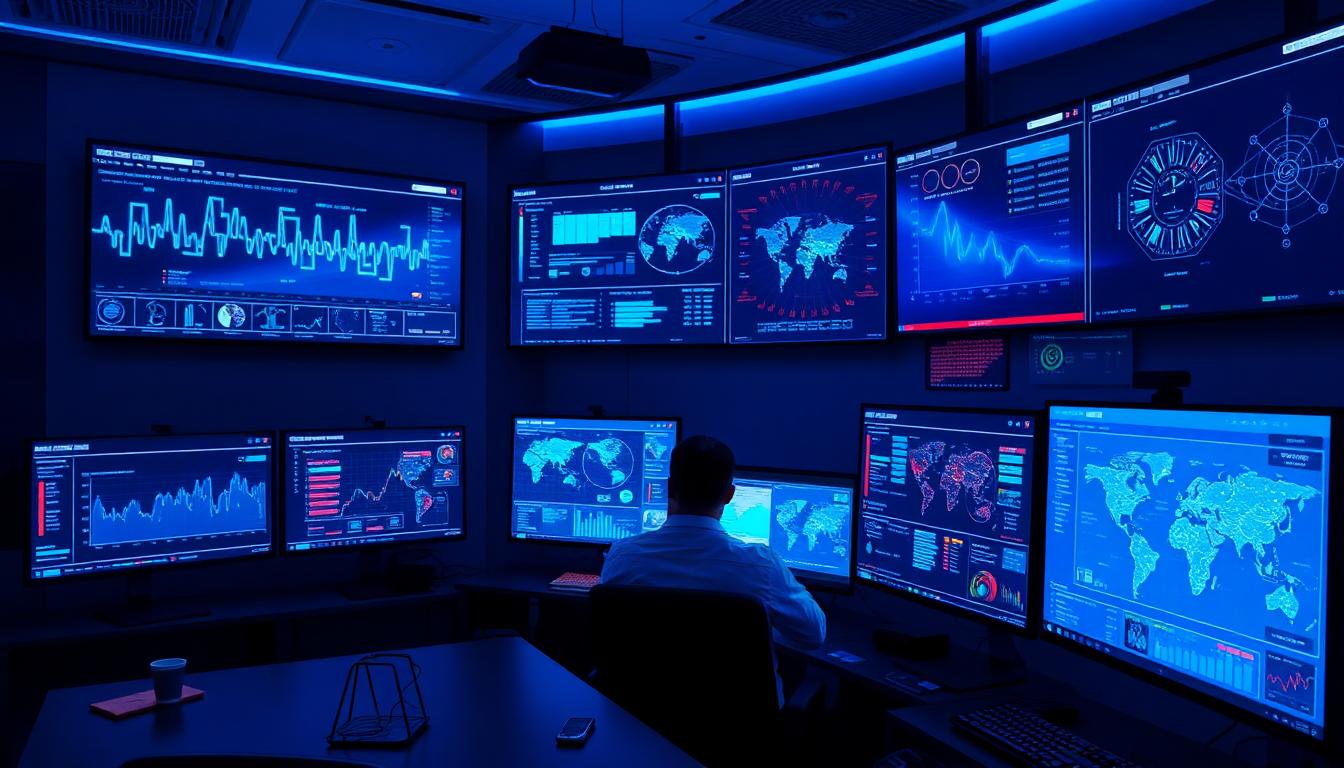
Sorting out the pros and cons of Darktrace isn’t about just making a simple list. Every AI security platform has its blind spots and bright sides—especially one as visible as Darktrace. For years, I’ve tested, tuned, and wrestled with both its benefits and the usual sticking points. Here’s how things shake out, with real user experience, recent industry surveys, and threat trends from 2025 shaping my view.
What Darktrace Does Well
Let’s start with the upside. Darktrace consistently stands out in a crowded security market due to how it combines AI-powered detection with broad integration and autonomous response. Its “immune system” approach learns your business’s unique patterns, asking for little setup beyond the basics. The platform then uses this baseline to spot new, evasive threats that rule-based tools often miss.
Here’s how these strengths show up in daily use:
- Self-Learning, Not Static: Darktrace doesn’t care about preloaded “rules.” Instead, it studies your own data and tunes itself, which means new attack techniques (even those built with AI) get noticed faster.
- Real-Time, Hands-Off Containment: The Antigena module can respond to threats instantly. Devices, user accounts, or emails get quarantined before much damage is done—delivering true “security autopilot.”
- Unified Dashboard: The interface pulls in data from endpoint, network, email, and cloud, so you get a holistic threat picture without juggling tool after tool.
- Alert Noise Reduction: Most users notice a drop in “false positive” incidents. Fewer, smarter alerts make for less analyst fatigue.
- Global Proof: According to the 2025 Cyber Threat Landscape: Darktrace’s Mid-Year Review, Darktrace detected over 12.6 million malicious emails between January and May 2025, and its anomaly-based tech repeatedly picked up sophisticated attack techniques that legacy systems missed.
A lot of organizations also praise Darktrace for its hands-off deployment. You aren’t rewriting workflows daily. As threats evolve—like the wave of AI-enhanced phishing and ransomware attacks—Darktrace adapts, keeping it relevant even as attackers get more creative.
Where Darktrace Falls Short
Now, not everything is rosy. Even after months of use, some limits just don’t go away. Here are a few I’ve seen (and heard echoed in peer reviews):
- “Black Box” Factor: Many actions (especially the autonomous ones) lack detailed explanations. It learns and acts behind the scenes, but when a device or user is locked out, the platform sometimes fails to give enough “why.” This makes post-incident reviews harder than they should be.
- Complexity and Tuning: Out of the box, Darktrace is effective, but to squeeze all the value from it, you need to invest in ongoing tuning. Analysts must tailor sensitivity levels, thresholds, and alerts over weeks or months for the AI to stop surfacing irrelevant incidents.
- Steep Price Tag: For small and mid-sized organizations, cost is a real barrier. Darktrace is positioned as a premium tool, reflecting its global reach (over 10,000 customers in 110 countries) and tech stack—but not every team has the budget.
- Opaque AI Decisions: When you automate incident response, you need trust. Some security leaders hesitate because of the platform’s limited transparency into the logic behind its decisions. This remains a talking point in Gartner Peer Insights and other customer feedback.
- Heavy in Larger Environments: Things can feel overwhelming if you’re a lean team spinning up in a sprawling, hybrid cloud or OT environment. Initial alert traffic—while more intelligent than most—can still flood new users before calibration.
You’ll find these challenges reflected in deeper customer commentary, including recent Gartner Peer Insights ratings for Darktrace, where the score is high (4.8/5 for email security) but transparency and onboarding support are recurring themes.
Where Darktrace Could Level Up
The best products never stop improving. Darktrace is no exception and, given the 2025 threat trends, here are the areas most ripe for refinement:
- Greater Explainability: Users want more detail on why the AI triggers specific actions. Giving analysts insight into detection logic would speed up trust (and tuning), especially when responding to high-stakes incidents.
- Smoother Onboarding: The rollout is better than most, but more project guidance, best-practice templates, and tailored walkthroughs would help teams shorter on staff or security ops experience.
- Affordable Tiers: Expanding entry-level plans or providing flexible, transparent pricing could open the door to smaller businesses and startups shut out by the current structure.
- Integrations with Other AI Tools: As cloud and security ecosystems sprawl, broader compatibility with third-party tools would save time and boost value for companies running vendor “mix and match”.
- Education & Training: Many users agree that practical, easily accessible training—for both tuning and incident response—would make day-to-day management less intimidating.
Here’s a quick table to sum it up:
| Area | What Works Well | Where It Needs Work | Room to Grow |
|---|---|---|---|
| Detection | Learns and adapts to new threats | Sometimes unclear “why” behind alerts | More transparent AI decision explanations |
| Response | Fast, automatic incident containment | Can feel too hands-off | Clearer control options, better reporting |
| Cost | Value for large, complex orgs | Expensive for small teams | Flexible, transparent pricing tiers |
| Usability | Easy early use, powerful dashboard | Can overwhelm with raw event data | Smoother onboarding, user-focused training |
| Coverage | Multi-domain (cloud, OT, email, etc.) | Integration gaps with newer tools | Deeper partner ecosystem, API coverage |
My Honest Rating
Darktrace is riding at the front of the AI cybersecurity pack, but it’s not the magic bullet marketers sometimes paint. Given its strengths in catching novel threats and the hurdles with price and transparency, I place it at a dependable 7.5 out of 10 for most use cases in 2025. Power users and large security teams will see a big upside, but smaller businesses may balk at the cost and learning curve.
For context on how Darktrace compares to other top AI security platforms, this roundup of best AI security tools in 2025 gives a clear overview.
As always, folks weighing Darktrace should weigh its real-world strengths—and its rough edges—against their own risk tolerance, team skills, and budget. This platform isn’t for everyone, but if you need fast, adaptive threat detection, it’s one of the few tools already proven on the front lines.
Is Darktrace Worth It? My Final Score
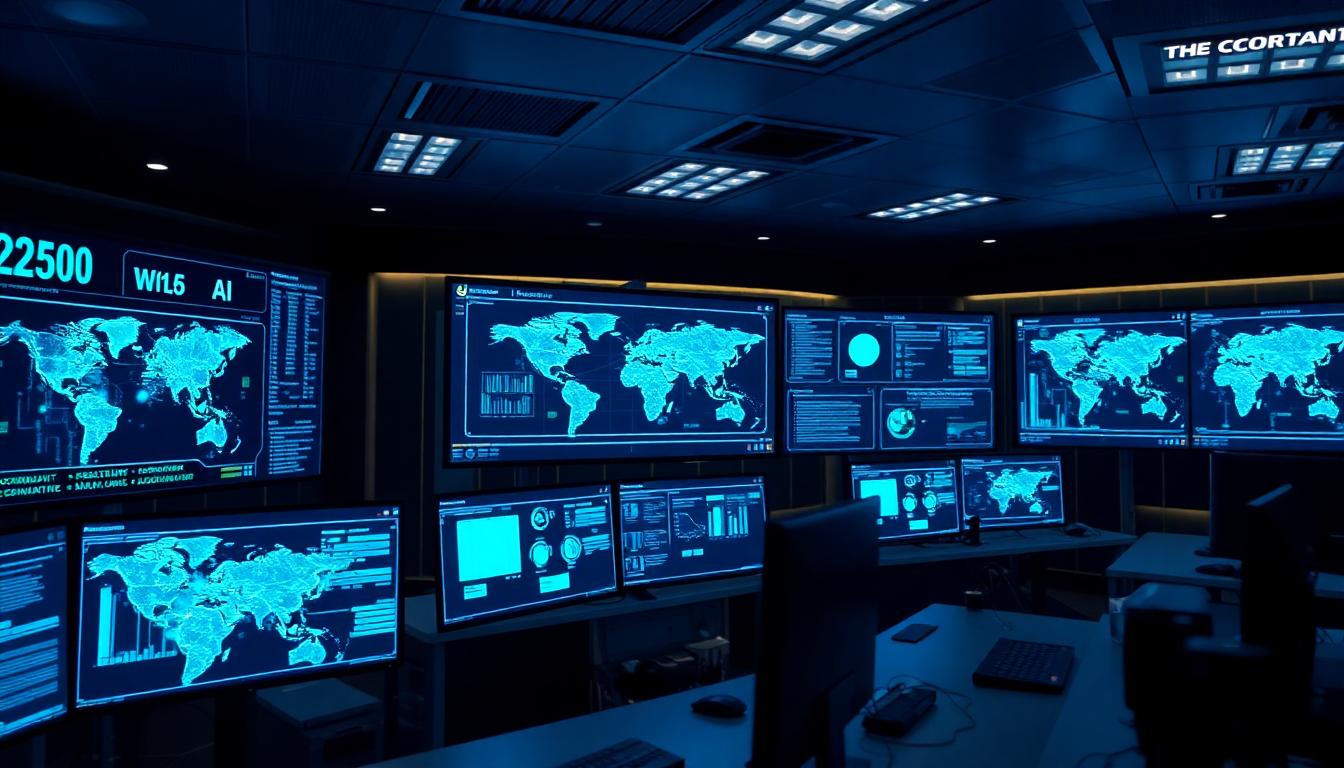
After a full cycle of hands-on use, back-to-back demos, and some gritty attack simulations, here’s how Darktrace stacks up when you strip out the marketing fluff and zero in on practical value. Below, I break down what makes Darktrace worth it (or not) for teams on the front lines of security in 2025.
Where Darktrace Delivers Real Value
Darktrace takes a different route than cookie-cutter security tools. Its self-learning AI actually pays off in daily use, especially when you look at the speed and accuracy of detection. The platform adapts to your unique environment, so it’s not just running down a checklist of known threats. You’re buying into an “immune system” for your network—one that can single out risks as soon as something feels off.
A few things stand out:
- Speed: The jump from alert to action is real. I witnessed Darktrace’s Antigena module isolate devices in under a minute during tests, halting simulated ransomware in its tracks.
- Coverage: Everything from email to cloud and operational tech is in scope. The system doesn’t just rely on firewalls or endpoints; it’s watching across the environment.
- Less noise: Alert fatigue kills good security. With Darktrace, the signal-to-noise ratio improves as the platform learns. Put simply, fewer false alarms means fewer distractions and better focus.
- Resilience to new attack types: The platform’s knack for catching never-before-seen threats—without manual rule growth—has real value as AI-powered attacks rise in frequency.
Many companies echo these benefits. As shown in the 2025 Cyber Threat Landscape Mid-Year Review, Darktrace users faced millions of sophisticated email threats and saw clear improvement over legacy tools.
Clear Caveats: What Holds It Back
No tool is perfect, and Darktrace has its rough edges. The biggest point of tension? Black-box logic. Sometimes, Darktrace makes a decision—blocks a device or locks down an inbox—without giving you a deep technical “why.” This shadowy AI reasoning frustrates analysts, especially if you need bulletproof evidence during an incident review.
Cost weighs heavy too. For lean startups or solo creators, pricing often sits out of reach. Mid-size teams can make it work, but only if they’re ready for the learning curve and routine tuning. For these groups, I suggest keeping an eye on lower-tiered tools in roundups like this list of the best AI security tools in 2025 for true apples-to-apples price and feature comparison.
Some hands-on users I’ve spoken with also want simpler onboarding, more how-to resources, and expanded integrations for newer cloud environments.
My Real-World Score (1-10)
I grade Darktrace a solid 7.5 out of 10 for most organizations in 2025. Here’s why:
- Strong detection and quick response earn big points.
- Unified coverage across identity, endpoint, email, and OT is hard to match.
- AI “black box” issues and a premium price prevent a higher score—particularly for smaller or less-experienced teams.
If you’re a large enterprise or security-forward startup aiming to stay ahead of advanced attacks, Darktrace gives you muscle that’s tough to build in-house. For smaller teams, that same muscle comes at a cost and complexity that may not feel justified.
| Factor | Score (out of 10) | My Take |
|---|---|---|
| Threat Detection | 9 | Best-in-class for novel/unknown risks |
| Autonomous Response | 8 | Fast, confident actions—sometimes too opaque |
| Usability | 7 | Smart dashboard, but onboarding and tuning take work |
| Flexibility | 8 | Strong for cloud, email, OT, network |
| Value for Cost | 6 | Worthwhile for big orgs, pricey for small teams |
For more technical detail and survey-backed pros and cons, check out the findings in the State of AI Cybersecurity Report 2025. It’s loaded with peer data and should help if you’re on the fence about what AI-driven security can (and can’t) do right now.
One thing’s clear: Darktrace isn’t magic, but it is miles ahead of the manual rule-chasing most companies still depend on. If you value faster reactions, broad coverage, and can tolerate AI’s occasional mysteries, Darktrace lives up to much of its promise. If you’re on a shoestring or want perfect clarity in every security move, keep hunting and compare options directly.
